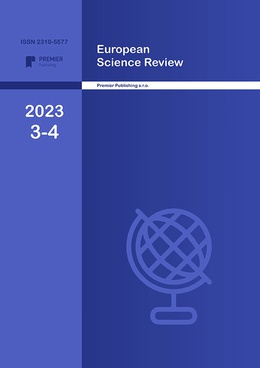PSYCHOLOGICAL CORRELATES OF EATING DISORDERS AMONG FEMALE UNDERGRADUATES OF OBAFEMI AWOLOWO UNIVERSITY ILE-IFE
Authors
ADEBIMPE, OLUWAFISAYO A., IDEHEN, E. E., OYEWOLE, A. O., BABATUNDE S. I., TAIWO, O. A.

Share
Annotation
The study investigated the extent of eating disorders and the psychological correlates that might predispose young adults to serious health problems. It also examined the influence of body image, fear of negative evaluation, religiosity and general psychopathology on eating disorder. 1000 female undergraduates aged 15-30 years were recruited using a stratified random sampling design at the Obafemi Awolowo University Ile-Ife. Data were collected on socio-demographic variables. In addition, the adapted versions of the Eating Attitudes Test (EAT), Body Shape Questionnaire (BSQ), Fear of Negative Evaluation (FNE), Religious Orientation Test (ROT) and General Health Questionnaire (GHQ) were administered. Data were analysed using descriptive (frequency counts, percentages, means and standard deviation) and inferential statistics (2 Way ANOVA and post-hoc tests). 171 respondents were classified as highly at risk for eating disorders. The results showed that body image (F = 18.8; p < .05) and fear of negative evaluation on eating disorder (F = 6.59; p < 0.05) had statistical influence on eating disorders. There was no statistically significant influence of general psychopathology (F = 1.37, p > 0.05) and religiosity (F = 0.45, p > 0.05) on eating disorder.
Keywords
Authors
ADEBIMPE, OLUWAFISAYO A., IDEHEN, E. E., OYEWOLE, A. O., BABATUNDE S. I., TAIWO, O. A.

Share
References:
Cooper, P.J., Taylor M. J.,Cooper, Z. and Fairburn C. G. (1987), The development and validation of the Body Shape Questionnaire. International Journal of Eating Disorders 6: 485-494.
Commerford, M. C., and Reznikoff, M. (1996), Relationship of religion and perceived social
support to self-esteem and depression in nursing home residents. The Journal of Psychology,
130, 35−50.
Dolan, B. (1991), Cross-cultural aspects of anorexia nervosa and bulimia: a review. International
Journal of Eating Disorder 10:67–78.
Ekeroth K., Broberg A. G. and Nevonen L. (2004) Eating disorders and general
psychopathology: a comparison between young adult patients and normal controls with and
without self- reported eating problems Euopean Eating Disorders Review, Volume 12, Issue 4,
pages 208– 216, John Wiley and Sons, Ltd.
Ellison, C. G. (1993), Religious involvement and self-perception among black Americans. Social
Forces, 71, 1027−1055.
Ellison, C. G., & Levin, J. S. (1998), The religion-health connection: Evidence, theory, and
future directions. Health Education and Behavior, 25(6), 700−720.
Famuyiwa, O. O. (1988), Anorexia nervosa in two Nigerians. Acta Psychiatry Scand 78(5):550-4
Ferraro, K. F. (1998), Firm believers? Religion, body weight, and well being. Review of
Religious Research, 39, 224−244.
Garner, D. M., Olmsted, M. P., Bohr, Y., and Garfinkel, P. E. (1982), The Eating Attitudes Test:
Psychometric features and clinical correlates. Psychological Medicine, 12, 871-878.
Gluck, M. E. and Geliebter, A. (2002), Body Image and Eating Behaviours in Orthodox and
Secular Jewish Women. Journal Gender Spec 58: 36-52
Gregory, L.D., and Buchan, T. (1984), Anorexia Nervosa in a Black Zimbabwean. British
Journal of Psychiatry 145: 326–330.
Idehen, E.E. (2000), The development and validation of religiosity scale, Ife Psychologia
Journal 9(2), 58-69.
Izevbigie, T.I. and Owie, I. (2006),Journal of Instructional Psychology : George Uhlig Publisher
Education; Psychology and mental health Volume: 33
Hartline, C. (2000,) Dying to fit-Literally People Magazine
Kim, K. H., Sobal, J., and Wethington, E. (2003), Religion and body weight. International
Journal of Obesity, 27(4), 469−477.
MorgaLn, C. S., Affleck, M., and Solloway, O. (1990), Gender role attitudes, religiosity, and
food behaviour: Dieting and bulimia in college women.Social Science Quarterly, 71, 142−151.
Moulding, N., and Hepworth, J. (2001), Understanding body image disturbance in the
promotion of mental health: A discourse analytic study. Journal of Community and Applied
Social Psychology, 11, 305−317.
Nwaefuna, A. (1981), Anorexia Nervosa in a Developing Country. British Journal
of Psychiatry 138: 270–272.
Powell, L. H., Shahbi, L., & Thoresen, C. E. (2003). Religion and spirituality: Linkages to
physical health. American Psychologist, 58, 36−52.
Richards, P. S., Hardman, R. K., Frost, H. A., Berrett, M. E., Clark-Sly, J. B., and Anderson, D.
(1997), Spiritual issues and interventions in the treatment of patients with eating disorders.
Eating Disorders, 5(4), 261−279.
Shatenstein, B., and Ghadirian, P. (1998), Influences on diet, health behaviours and their
outcome in select ethnocultural and religious groups. Nutrition, 14(2), 223−230.
Smith, M. H., Richards, P. S., and Maglio, C. J. (2004). Examining the relationship between
religious orientation and eating disturbances. Eating Behaviours, 5(2), 171−180.
Smith, T. W. (1990), Review of Religious Research, 31, 225−245.
Stice, E., and Shaw, H. E. (1994), Adverse effects of the media portrayed thin-ideal on women
and linkages to bulimic symptomatology. Journal of Social and Clinical Psychology, 13, 288-
308.
Unuhu, F.T., Ebiti N.W., Oju, G. O.and Aremu, S.B.(2009), Anorexia nervosa in a Nigerian - A
case report Federal Neuropsychatiric Hospital, Barnawa, Kaduna, Nigeria Medical
Journal 50:23-4.
Warren, W. G., Jackson, C. C., Thornton, C., Russell, J., Touyz, S. W., & Beumont, P. J. (1994),
A study of the relation between eating disorder anddeath concern. Australian New Zealand
Journal of Psychiatry, 28(3), 463−468.
Zinnbauer, B. J., Pargament, K. I., Cole, B., Rye, M. S., Butter, E. M., and Belavich, T. G.,
(1997), Religion and spirituality: Unfuzzying the fuzzy.Journal for the Scientific Study of
Religion, 36(4), 549−564.


